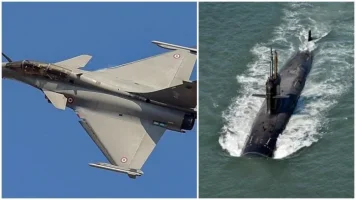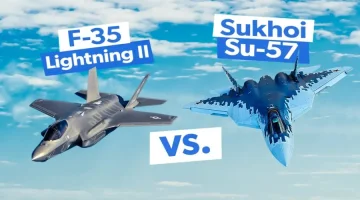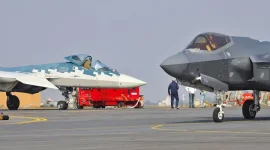- Views: 2K
- Replies: 36

India is reportedly exploring the possibility of acquiring a limited number of F-35 Lightning II fifth-generation fighter aircraft from the United States as a temporary measure to address potential capability gaps while its domestic Advanced Medium Combat Aircraft (AMCA) program matures.
The acquisition, if pursued, is expected to mirror the government-to-government (G2G) framework employed in the 2016 purchase of Rafale fighter jets from France.
Sources indicate that any potential F-35 deal would involve a relatively small number of aircraft, likely between 36 and 54, constituting two to three squadrons. The agreement would also be subject to strict technology safeguards mandated by the United States government, reflecting the sensitive nature of the F-35's advanced capabilities.
The procurement process is anticipated to follow a G2G model, facilitating direct negotiations between the Indian and US governments. This approach, similar to the one used for the $8.88 billion Rafale acquisition, aims to accelerate the process and potentially secure pricing comparable to that offered to the US armed forces. This method avoids the often lengthy and complex multi-vendor competitive bidding process.
A primary driver for considering the F-35 is the extended timeline of the AMCA program. While the Cabinet Committee on Security (CCS) approved the AMCA project in March 2024, the first flight of the indigenous fifth-generation fighter is not anticipated until early 2029.
Furthermore, full-scale production is not projected to commence until 2034-2035 at the earliest. This leaves a significant period where the Indian Air Force (IAF) may face a shortfall in cutting-edge combat capabilities.
However, even a rapid decision on the F-35 would not provide an immediate solution. Current estimates suggest that deliveries of the aircraft could not begin before 2029, at the earliest.
Lockheed Martin, the manufacturer of the F-35, faces a substantial order backlog, supplying the aircraft to the US military, NATO allies, and partners in the Indo-Pacific region. Full operational capability of even two squadrons within the IAF could take an additional three to four years after initial deliveries, potentially extending to 2032-2033.
An unnamed IAF official mentioned in previous reports that supply chain constraints and manufacturing capacity limits are among the factors contribute to delay in delivery, even if order placed in 2025, delivery may face delay untill 2030.
The F-35, a single-engine, supersonic, all-weather multirole fighter, is renowned for its stealth characteristics, advanced sensor suite, and network-enabled warfare capabilities. It is produced in three main variants: the F-35A (conventional takeoff and landing), the F-35B (short takeoff and vertical landing), and the F-35C (carrier-based).
While the specific variant under consideration by India has not been officially disclosed, the F-35A is the most common and likely candidate. It's important to note that acquiring the F-35, often considered the most advanced fighter jet globally, might require India to also buy specific American weaponry. These weapons could include air-to-air missiles like the AIM-120 AMRAAM and AIM-9X Sidewinder, as well as air-to-ground munitions such as the Joint Direct Attack Munition (JDAM) and Paveway series of laser-guided bombs.



